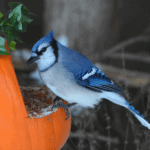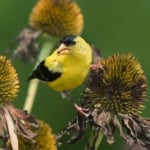Aster The September Birth Flower
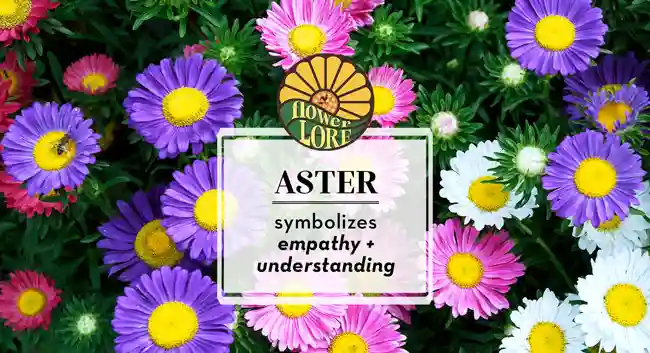
The traditional September birth flower, aster is a spritely bloom with a rich history and layers of lore that add extra meaning to its symbolism. By learning more about asters, you can bring even deeper meaning to your flowerbeds, bouquets, and arrangements, not just in September, but all year long. Jump to aster flower meaning
About Aster Flowers
Asters are a favorite perennial autumn flower, typically seen wild in woodlands and meadows and found on every continent except Antarctica. First described in the mid-1700s, there are more than 32,000 species in the Asteraceae family, of which about 170-180 are asters. These lovely, widespread flowers are related to sunflowers, daisies, cosmos, dahlias, chrysanthemums, zinnias, and dandelions. True asters are native to Eurasia, but have been cultivated worldwide.
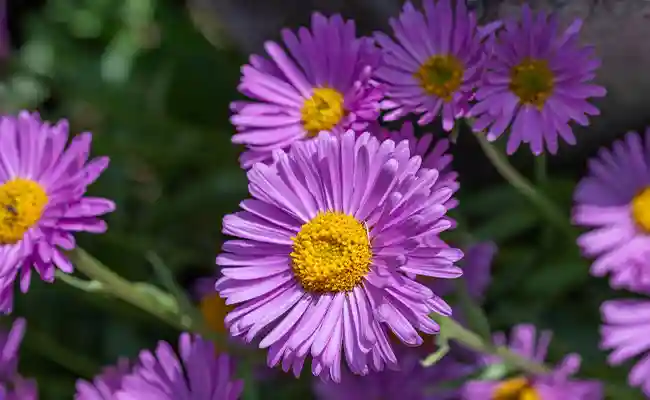
Depending on the variety, asters are found in a range of purple, pink, blue, and white shades, most often with sunny yellow centers. Their strong stems keep the blooms upright, and they range in size from 1-6 feet high and grow in a bushy habit from 1-4 feet wide.
Asters were named for their star-shape blooms, from the Latin “aster” meaning star. These flowers are also occasionally known as the herb of Venus, starworts, frostflowers, and Michaelmas daisies, with each name showing the flower’s unique cultural connections and significance.
Related Product: September Birthstone – Lapis Necklace
Aster Legends
There are several similar origin myths for how asters came to be, but the most well-known is from ancient Greek legends. The goddess Astraea, who is associated with justice, innocence, and purity, was so distraught with the destruction after the Earth was flooded by Zeus a means to end a human war, that she wept. Also known a the Star Goddess, her tears fell as stardust, and when they touched the earth, star-shaped asters bloomed. This legend is why asters are often used to symbolize justice, innocence, and purity, the same traits Astraea is known to uphold.
The association with stardust and Astraea is also how these flowers got the name starworts.
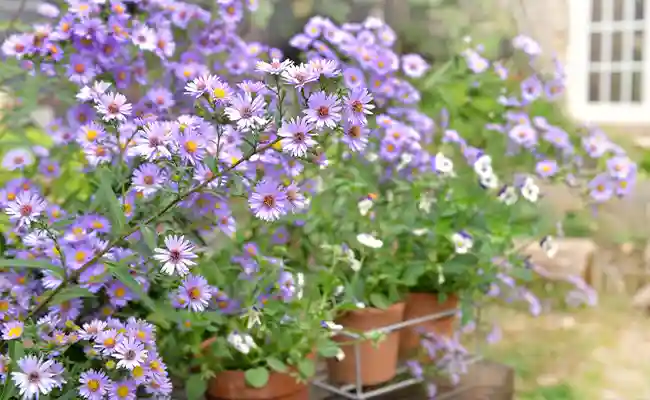
Aster Flower Meaning Around The World
In addition to Greek legends and symbolism, aster flower meaning spans many cultures around the world.
In India, China, and areas of Persia, aster flowers are often carried in weddings because they represent purity and love, ideal qualities on that very special day. Chinese culture in particular associates asters with fidelity, devotion, and wisdom, which are all additional traits ideal for the foundation of a marriage. In ancient Roman culture, asters were associated with the goddess of love, beauty, and art – Venus – and were often called the herb of Venus. At times, Romans even mixed asters into love potions in the hopes of harnessing the powers of Venus for romantic intentions.
In Christian symbolism, asters are associated with the Feast of St. Michael and All Angels, also known as Michaelmas, which is celebrated each year on September 29. As these flowers are one of the last blooms to be still brilliant and at peak color at that time, it is natural they would also come to be called Michaelmas daisies.
More general symbolism associated with asters are the traits of elegance, faith, valor, daintiness, patience, wisdom, and even fertility. The color of an aster could also affect its meaning and symbolism, with white asters most closely associated with purity and innocence, while purple asters meaning royalty, dignity, and wisdom. Pink asters mean devotion and kindness, and bold red shades of these flowers are connected to undying love and vibrant passion.
In addition to their symbolism as the September birth month flower, asters are also the official flower of the twentieth wedding anniversary. This connection represents resilience and patience, both qualities a couple must demonstrate in abundance for their union to last so many years.
Asters are also the official flower of the Zodiac sign Capricorn (December 22 through January 19), and more loosely associated with the sign Virgo (August 23 through September 22).
Any questions? Contact [email protected]
Aster Flower History
While the lore and legends associated with asters is certainly fascinating, these flowers also have roles in political history. On October 31, 1918, Hungarians began a revolt against their government and its actions in World War I, ultimately resulting in the dissolution of Austria-Hungary and independence for Hungary.
Soldiers supporting the revolt wore aster flowers, and this became known as the Aster Revolution. Because of this, asters have remained a powerful symbol of liberty and revolution in central Europe.
In the United States, asters have a much gentler connection to politics. Founding Father, statesman, author of the Declaration of Independence, and third US President Thomas Jefferson had a fondness for asters (among many other flowers), and grew a wide variety of them at his home, Monticello, in Virginia. Even today, a wide range of aster seeds are available for sale from Monticello.
Aster Flower Healing Properties
With so many varieties of asters so widespread, it is no surprise that these flowers have been adapted into different herbal remedies and folk medicine. Asters have been used as teas, poultices, and other treatments for a diverse range of symptoms and conditions, including headaches, colds, fevers, epilepsy, asthma, general congestion, swollen lymph nodes, and hangovers. When added to a salve or ointment, asters were believed beneficial for treating dog bites or snake bites.
Different Native American tribes used aster root tea to treat diarrhea, earaches, toothaches, and fevers, while traditional Chinese medicine incorporates asters as a treatment for hemorrhages and malaria, as well as different respiratory ailments.
With their mildly balsamic, refreshing scent, asters are also often used in aromatherapy. Whether in lotions, candles, essential oils, perfumes, or incense, asters can help create a calming, relaxing atmosphere to reduce stress and anxiety.
It should be noted, however, that these homeopathic remedies have not been verified by modern medical testing, and asters are not part of more advanced medical practices today.
Furthermore, asters are not considered to be edible and contain several compounds, including saponins, that could cause strong allergic reactions in those sensitive to the compounds.
The flowers are safe to handle and can be beautiful in gardens and cut arrangements, but individuals with skin conditions should consider wearing gloves when handling asters as they could have a reaction.
Aster Flower In Art
The popularity of asters and their widespread appeal has ensured their place in art, and these flowers are often depicted in fields, meadows, and bouquets with similar blooms. Renowned impressionist Claude Monet gave asters their own notable work with his cut bouquet of the blooms, shown in a still life vase, in 1880, while Vincent van Gogh also shows asters with their close relative, sunflowers, as well as with gladioli, in a number of his works.
Asters have also featured in notable poetry, such as Emily Dickinson’s “It will be Summer – Eventually (342),” which mentions the blooms. Robert Morgan’s “Purple Asters” written in 1981 is a tribute to the flowers and specifically notes “the months of lavender, late summer and early fall” as being when these flowers are part of a variety of similarly-colored blooms. Jane Flanders describes the flowers’ motion and seasonal appearances in her “Wild Asters” piece, published in 1979.
Growing Asters
Where asters can truly shine as outstanding artwork is in the garden or landscape, as they have been deliberately cultivated for 4,000 years. They are particularly lovely in rock gardens, as borders, or a part of pollinator gardens to welcome bees and butterflies. These easy-to-grow blooms can thrive in all hardiness zones, and will add a gorgeous pop of color wherever they are planted.
Asters prefer at least six hours of full sunlight to produce the most brilliant blooms, but can also do quite well in partial or dappled shade. Soil must be well-draining and kept moist but not soggy.
Ideally, watering with a soaker hose or drip system is best to minimize any chance of rot on the foliage. A balanced, slow-release fertilizer can help nourish asters, and deadheading can help keep the plants in a compact shape while encouraging reblooming from late summer through fall so these September birth flowers look their very best throughout their associated month.
Morning Glory — The Alternate September Birth Month Flower
While aster is the traditional birth flower associated with September, an alternative is the morning glory. More than 1,000 species of herbaceous vines are considered morning glories, producing prodigious bright, trumpet-shaped blooms in whites, pinks, blues, reds, and purples. While the flowers last just one day—blooming from near dawn until later in the day—they can be a lovely option to mark a significant day such as a birthday, anniversary, or other special event.
Morning glories have symbolism that is very appropriate to their transient nature. These flowers mean daintiness, and often convey love in vain or unrequited love.
Like asters, morning glories have also been used in some traditional medicines. These flowers are occasionally used as an herbal laxative.
Morning glories can be easy to grow in full sun and are a great attractor for butterflies and hummingbirds. With their vining habit, they can be lovely over a fence, pergola, arbor, or archway. But take care with their placement because morning glory seeds are poisonous and can be dangerous to children and pets.
Great care must be taken to plant actual morning glories (Ipomoea species) and not the very similar, often mistaken field bindweed (Convolvulus arvensis) which can look strikingly like morning glory but is actually an invasive, hard-to-deter weed.
Whether you prefer asters or morning glories, either flower is a great option for celebrating September birthdays and special occasions, and will add lovely color to an autumn flowerbed, garden, or landscape.
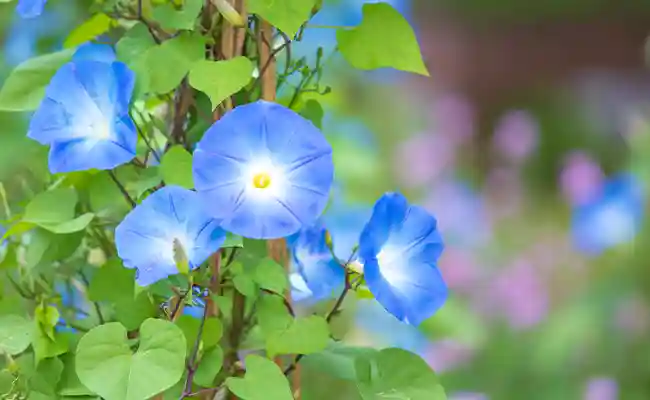
Join The Discussion
Which September birth month flower do you prefer: aster, morning glory, or a different flower?
Did anything surprise you about the aster flower meaning?
Share your thoughts, tips, and tricks in the comments below!

Melissa Mayntz
Melissa Mayntz is a writer who specializes in birds and birding, though her work spans a wide range—from folklore to healthy living. Her first book, Migration: Exploring the Remarkable Journeys of Birds was published in 2020. Mayntz also writes for National Wildlife Magazine and The Spruce. Find her at MelissaMayntz.com.



